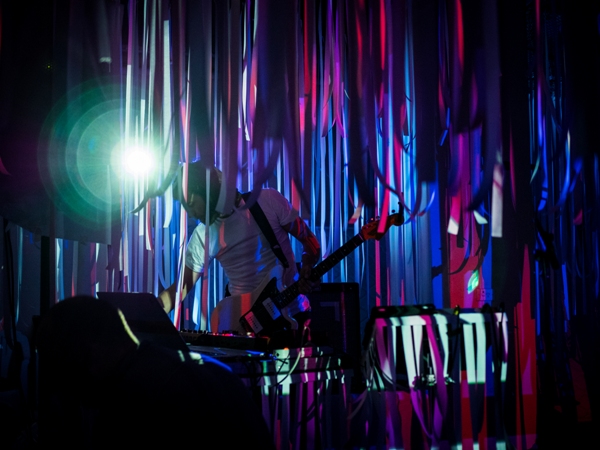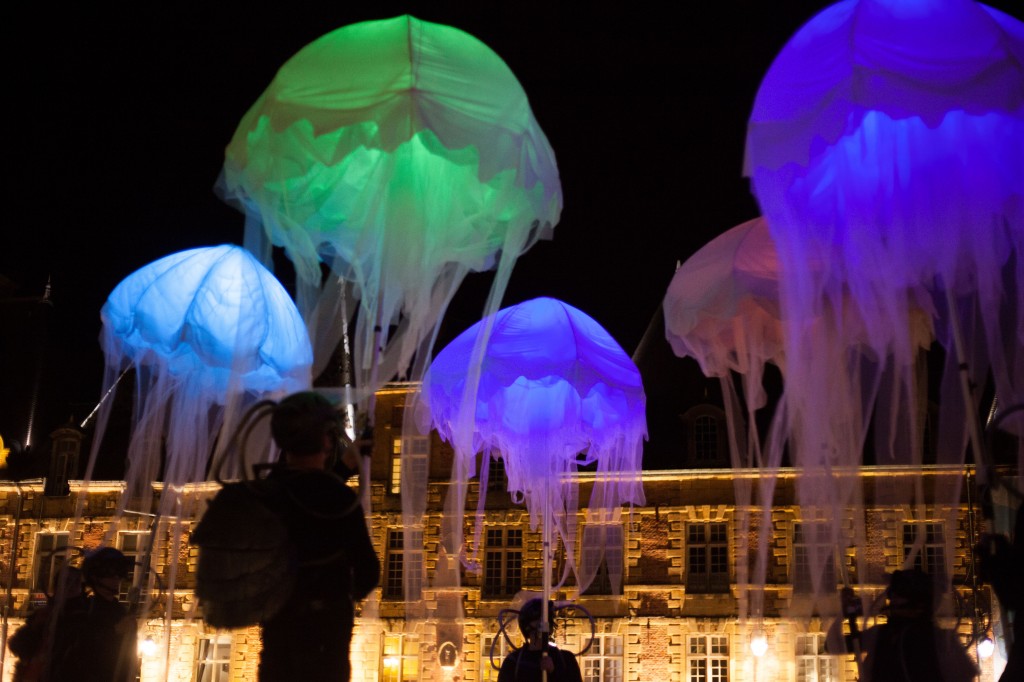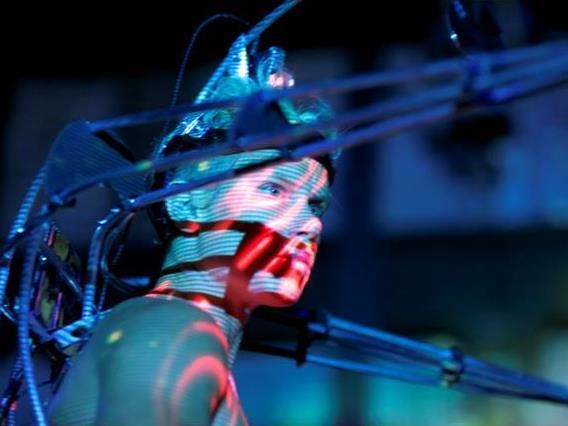Phosphori, Stalker Theatre. Image credit: Matthew Syres
After-dark festivals create a transformative environment that draws crowds to venues that might be unnoticed in daylight.
The next one on the calendar this winter is Glow Winter Arts Festival in the City of Stonnington, where arts’ programming will once again capitalise on the creative potential of darkness through projections and illumination.
Night festivals are a prime example of activating a space in an unusual way, bringing a new demographic or a different kind of use for a venue. Festivals such as Glow take advantage of the natural stage set of a dark winter’s night to provide impactful programming using light and sound in a range of public spaces.
View 2016 Glow Winter Arts Festival program 11-21 August
Night festivals are a natural beacon for the interaction of art and technology and the possibilities for new sensory experiences are almost limitless.
‘The impact of light at night is almost a no-brainer, but at the same time it’s that level of detail that you can see at night where a single light source can cause shadows and so on that enhance the experience,’ said ENESS member Nimrod Weis, a collective known for their work at the intersection of art and technology.

Particle Bloom by ENESS; image credit: Sam Urving.
The latest work by ENESS is the 3D interactive experience Particle Bloom, the headlining event at Stonington’s Glow Festival this month. The experience of Particle Bloom is created through software written by the tech-savvy collective.
‘You put on these 3D custom glasses and what you see in front of you are visuals that are all based around a particle, which is a point in 3D space. That point then explodes into infinite visual possibilities from that one particle,’ said Weis.
‘Different performers, different musicians are playing each night throughout the event. Those visuals, the particles, they respond to the sound you’re hearing. The other level of engagement is a table that is laid out with fruits and vegetables and as you engage and touch those vegetables the visuals also change and can be enhanced just by interacting with the fruit and vegetables.’
Book tickets for Particle Bloom
The immersive work fits with the overall theme of Glow as a “playground for the public to explore after dark”.
In Arts Burst, illuminated jellyfish puppets will float down Toorak Road, operatic arias will be performed from rooftops and other unlikely places, and the synchronised movements of The Gold People will provide street entertainment.

Les Meduses – Ethereal and mesmerising jellyfish floating and illuminating across the night sky will appear on Toorak Road 19-20 August.
Roving performances and light installations at night such as these are almost a seasonal expectation in Melbourne this time of year, but Glow is combining this with some familiar staples from previous years. The free open air cinema Flicks ‘n’ Feasts will be back, along with Glow Comedy Club and Greville Projections (run by the team behind Gertrude Street Projection Festival).
‘I call winter time projection season because it is a time where it gets dark early and we have more time to play in our city in that way and see things in a different way. We are able to do more, winter is the perfect time for that,’ said Weis.
After-dark festivals reveal new creative potential in the merging of art and technology.
‘With technology driven elements like the Greville Projections and Particle Bloom, it’s brought a whole new dimension and range of diversity with how the City of Stonnington presents the festival experience and the artist direction of Glow,’ said Jessica Morrison, Arts and Culture Officer, City of Stonnington.
As Weis explains, the coupling of technology with night can enhance the activation of public space in the arts as it helps the audience to suspend their disbelief more easily when it comes to the illusion careful lighting can create.
‘A lot of what we do is dealing with illusion and illusion is always best performed in the dark because you are always trying to conceal and hide things in order to create that sense of illusion or wonder. How is that thing floating? How is that thing spinning?’
‘For better or worse, technology comes into the mix because it’s a way of creating interactivity. Forming interactivity through technology – they kind of go hand in hand. Technology enables an alternative reality in a sense.’
The alternative sense of reality that Weis describes comes from a desire to transform a space into an interactive experience, which ENESS achieves by combining art a technology. The projection mapping technique ENESS applies is one example of how the collective create a new experience for the audience. By projecting onto a surface to make it look like something else, the augmentation of the physical space is transformed by the virtual layer.
‘That’s always been our shtick, to combine the real world and the virtual and that in turn creates this meaningful new interaction or experience in a sense. It’s the unexpected that maybe makes things more meaningful,’ said Weiss.
During Glow Winter Arts Festival ENESS will be working closely with various musicians for Particle Bloom, including Great Earthquake and Mezzo Soprano Caroline Vercoe.
‘To incorporate those very techy visuals with an opera singer – that contrast in aesthetics is going to be an interesting mix that I’m excited about,’ said Weis.
To learn more about Glow Winter Arts Festival visit http://glowfestival.com.au/





